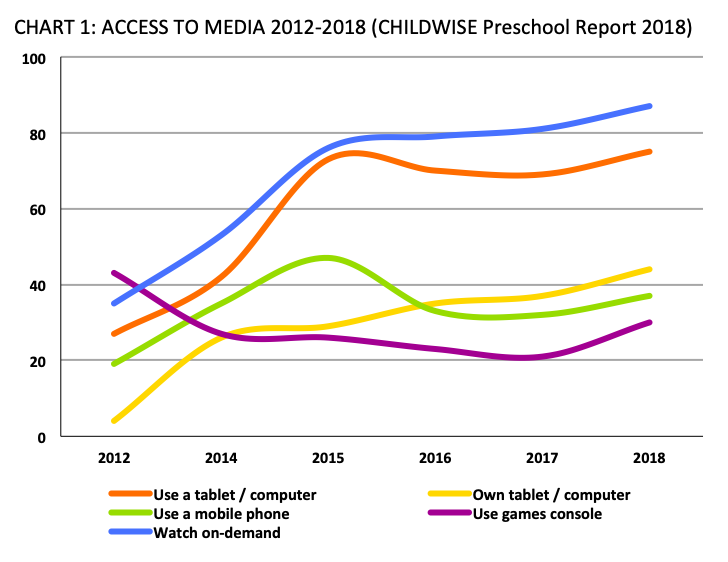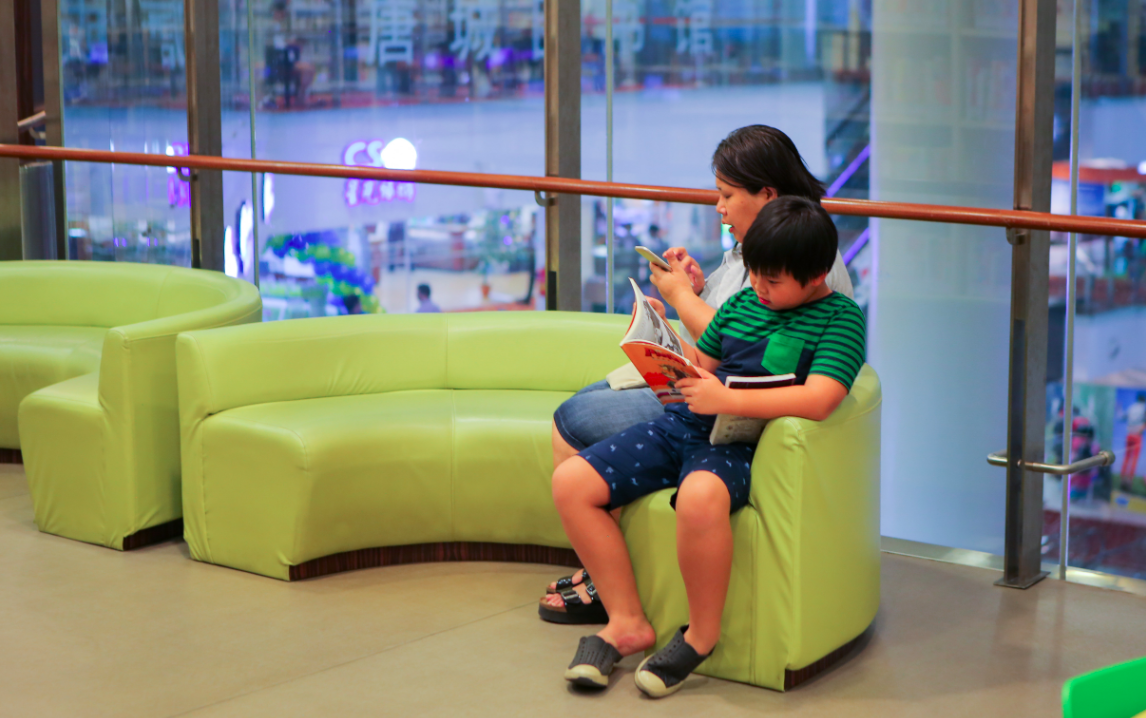 With young children spending longer than ever watching TV and online content and using connected devices, developing and guiding children towards high-quality content is increasingly important. In this post Jenny Ehren outlines the findings from the CHILDWISE Pre-school Report 2018 which examines the latest trends in media use for children aged 0-4 in the UK. Jenny Ehren is Associate Research Director at CHILDWISE. Her areas of expertise include education and careers, resilience and mental wellbeing among young people, and general media use. Jenny holds a BSc in business management from the University of East Anglia, and is a Certified Member of the Market Research Society. [Header image credit: T. Lawson, CC BY 2.0]
With young children spending longer than ever watching TV and online content and using connected devices, developing and guiding children towards high-quality content is increasingly important. In this post Jenny Ehren outlines the findings from the CHILDWISE Pre-school Report 2018 which examines the latest trends in media use for children aged 0-4 in the UK. Jenny Ehren is Associate Research Director at CHILDWISE. Her areas of expertise include education and careers, resilience and mental wellbeing among young people, and general media use. Jenny holds a BSc in business management from the University of East Anglia, and is a Certified Member of the Market Research Society. [Header image credit: T. Lawson, CC BY 2.0]
There was a time not that long ago when watching TV was arguably much simpler. We had a handful of channels to choose from in the UK, a video recorder and remote control if you were lucky, and the biggest decision I can personally remember was choosing between after-school TV on CBBC or CITV – most of us pledged our allegiance to either one or the other. So, as the last generation to know life before the digital revolution and constant connectivity, this surely puts us in a somewhat privileged position. In the words of Michael Harris, an author and journalist who writes regularly about the effects of technology on our society, “If we’re the last people in history to know life before the internet, we are also the only ones who will ever speak, as it were, both languages. We are the only fluent translators of ‘Before’ and ‘After’.”
Children nowadays grow up completely exposed to technology in one form or another and, for most of them, connected devices such as tablets and mobile phones will have been ever-present in their lives. Often before they can talk, or perhaps even walk, they are using touchscreens with determination and purpose, and navigating digital platforms with confidence and ease.
The latest data from the CHILDWISE Pre-school Report 2018 [1] reveals just how competent the youngest children have become when using technology. For starters, the number of under-fives with their own connected device (e.g. tablets, phones, PCs and laptops) is on target to become the norm for the majority of pre-schoolers over the next year or two, as the balance tips in favour of those with their own device rather than those without. And so perhaps it should also come as little surprise that the amount of time children aged one to four now spend watching television and online content is also increasing – nearly three hours a day on average.
CHILDWISE has been studying media consumption among children for more than 20 years. We have tracked the rapid growth of the internet and subsequent connected technology, and we have watched closely as an online eco-system has emerged, permanently changing the way in which young people, including toddlers, consume media.
Access to technology is growing among pre-schoolers. Tablet computers, and touchscreen technology in general, have made a significant impact on all age groups, but most notably among young children and toddlers. In fact – by the age of two, most children are regularly using these devices, with access not far off universal by the age of four.

The tablet has quickly emerged as the most-wanted device for children, even among the very young – and parents have encouraged this, considering these devices and the games and apps on them, as a great way to keep small children entertained. The length of an average session (1.1 hours [2]) is testament of parents’ approval. But greater access to on-demand services, as detailed in Chart 1 above, is also undoubtedly a contributory factor in the length of these sessions. Almost all households with children under-five now have regular access to TV programmes and video content via a range of on-demand services, with Netflix and Amazon Prime both gaining significant ground in the past year. Almost half of pre-school children also regularly access content via YouTube and YouTube Kids – and as a result, their list of favourite programmes is becoming much more varied. Most are drawn from across the (many) different pre-school channels, but we are also beginning to see more references to content exclusively available online, on paid-for streaming services, but also increasingly on YouTube.
YouTube is a growing phenomenon and is more interesting than ever for today’s young people, with pre-schoolers no exception. For the third consecutive year it remains the favourite app for under-fives, and it is the top choice in all age and gender categories. YouTube is now real competition for the likes of CBeebies, Disney and Nickelodeon, which is why the announcement that the government has pledged £60 million towards British children’s television programmes could not be more timely. The YouTube brand continues to grow in popularity among children, and although there should be no doubt that some of its channels can produce content that is equal to some of the industry’s biggest players, it has also faced a storm of criticism for failing to effectively monitor the plethora of content available for young children to watch, particularly on its sister service, YouTube Kids.
Children’s TV is no longer simple – it is fragmented. Never before have there been so many programmes and videos available for children to choose from, and yet funding by the main UK broadcasters has broadly halved over the past decade. With the digital revolution now in full swing and choice seemingly limitless, the pressure to produce (and preserve) high-quality children’s content feels greater than ever before, especially when there are some who believe that we’re now in the ‘twilight of world-conquering kids TV shows’ and that ‘animated world-domination’ may never happen on the same scale again. Keith Chapman, the creator of the hit TV series, Paw Patrol recently said: “It’s harder now to get something to become a success because there are so many channels and so many outlets and so many more shows. If you wrote it all down – from the spark of the idea to a global brand doing a billion dollars a year – it’s almost impossible. It’d be harder than winning the lottery”.
The new funding from the government aims to support home-grown talent and reverse the decline in UK-produced content, as well as increase quality across the board – which can only be a good thing. Children’s TV may no longer be simple (to us adults), but constant access to technology is here to stay. As parents, and as part of the last generation to remember life without this technology, it feels more important than ever that we play an active role in helping our children navigate today’s crowded television environment. We need to guide their viewing experiences, especially when they’re young, so that the content they see stimulates their learning and gives them a better understanding of the media-driven world around them.
Notes
[1] The annual CHILDWISE Preschool report talks to more than 1,000 parents of 0- to 4-year-olds, asking about their children’s media use and parents’ spending habits. To find out more, visit www.childwise.co.uk/reports
[2] CHILDWISE Preschool Report 2014
This post gives the views of the authors and does not represent the position of the LSE Parenting for a Digital Future blog, nor of the London School of Economics and Political Science.





